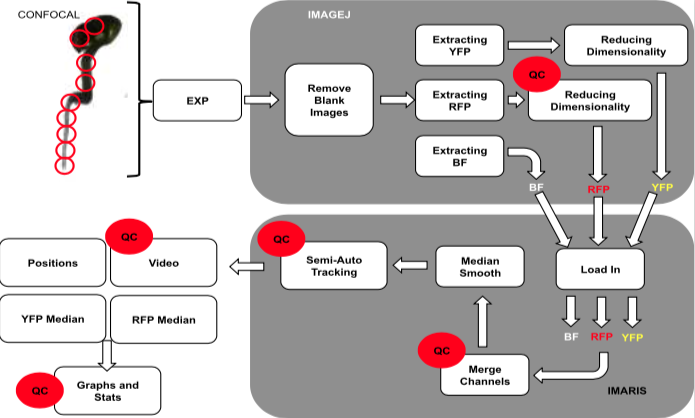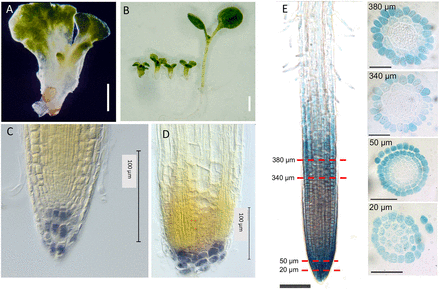GARNet Research Roundup: May 17th
This weeks GARNet research roundup includes six excellent papers investigating many aspects of Arabidopsis cell biology. Firstly Eirini Kaiserli from Glasgow introduces a novel regulator of blue-light signaling. Second is a paper that analyses the circadian clock with single cell resolution and is led by James Locke (SLCU) and Anthony Hall (Earlham Institute). The next two papers investigate different aspects of hormone signaling, with Keith Lindsey’s group at Durham looking at the relationshop between the HYDRA protein and the auxin response whilst Ottoline Leysers group in Cambridge looks at the link between auxin and cytokinin during shoot growth. The fifth paper from Phillip Mullineaux (University of Essex) provides a genome-wide analysis into the role of HEAT SHOCK TRANSCRIPTION FACTORA1b protein. The final paper from the lab of Piers Hemsley (James Hutton Institute, University of Dundee) should be of interest to many plant molecular biologists as they assess the functional significance of different epitope tags.
Perrella G, Davidson MLH, O’Donnell L, Nastase AM, Herzyk P, Breton G, Pruneda-Paz JL, Kay SA, Chory J, Kaiserli E (2018) ZINC-FINGER interactions mediate transcriptional regulation of hypocotyl growth in Arabidopsis. Proc Natl Acad Sci U S A.. pii: 201718099. doi: 10.1073/pnas.1718099115
Open Access
Eirini Kaiserli (University of Glasgow) leads this study that identifies the ZINC-FINGER HOMEODOMAIN 10 (ZFHD10) as a novel regulator of light signaling. ZFHD10 physically interacts with TANDEM ZINC-FINGER PLUS3 (TZP) and these proteins coassociate at promotors that are blue-light regulated. These results reveal of novel mechanism of action for the key multiple signal integrator TZP in the light regulated growth of Arabidopsis hypocotyls.
Eirini discusses this paper on the GARNet YouTube channel.
Gould PD, Domijan M, Greenwood M, Tokuda IT, Rees H, Kozma-Bognar L, Hall AJ, Locke JC (2018). Coordination of robust single cell rhythms in the Arabidopsis circadian clock via spatial waves of gene expression. Elife. 26;7. pii: e31700. doi: 10.7554/eLife.31700 Open Access
This paper is led by James Locke (SLCU) and Anthony Hall (Earlham) and investigates the circadian clock at single cell resolution. They use Arabidopsis plants grown in constant environmental conditions to show two desynchronised yet robust single cell oscillations that move both up and down the root. Their results indicate that the clock shows cell-to-cell coupling and they they modeled this relationship to recapitulate the observed waves of activity. Overall their results are suggestive of multiple coordination points for the Arabidopsis clock, which is different from the mammalian system of regulation.
Short E, Leighton M, Imriz G, Liu D, Cope-Selby N, Hetherington F, Smertenko A, Hussey PJ, Topping JF, Lindsey K (2018) Epidermal expression of a sterol biosynthesis gene regulates root growth by a non-cell autonomous mechanism in Arabidopsis. Development . pii: dev.160572. doi: 10.1242/dev.160572 Open Access
This collaboration between the research groups of Keith Lindsey and Patrick Hussey at the University of Durham investigates the role of the HYDRA1 (HYD1) sterol Δ8-Δ7 isomerase in epidermal patterning. This tissue shows highest HYD1 expression and hyd mutants have major root patterning defects. Tissue-specific expression of HYD1 indicates that it is involved with some type of non-cell autonomous signaling. Analysis of PIN1 and PIN2 protein expression suggests that auxin might be this functional signal
Waldie T, Leyser O (2018) Cytokinin targets auxin transport to promote shoot branching. Plant Physiol. 2018 May 1. pii: pp.01691.2017. doi: 10.1104/pp.17.01691.Open Access
This study from the lab of Ottoline Leyser (SLCU) investigates the integration between the plant hormones cytokinin and auxin. They investigate the role of cytokinin in shoot branching through analysis of Arabidopsis Response Regulators (ARRs) mutants. They show arr mutant phenotypes correlate with changes in stem auxin transport mediated by the PIN3, PIN4 and PIN7 efflux carriers, the expression of each respond to cytokinin signaling. Overall this study identifies a novel alternative pathway by which cytokinin impacts bud outgrowth through alterations in auxin transport.
Albihlal WS, Irabonosi O, Blein T, Persad R, Chernukhin I, Crespi M, Bechtold U, Mullineaux PM (2018) Arabidopsis Heat Shock Transcription FactorA1b regulates multiple developmental genes under benign and stress conditions. J Exp Bot. doi: 10.1093/jxb/ery142 Open Access
Phillip Mullineaux (University of Essex) leads this collaboration with French colleagues in a study that investigates the genome-wide targets of the HEAT SHOCK TRANSCRIPTION FACTORA1b (HSFA1b) protein. Under non-stress ad heat-stress conditions they showed that 1000s of genes are differentially expressed with a smaller proportion of genes showing different levels of direct interaction. The indirect targets of HSFA1b are regulated through a network of 27 transcription factors and they also provide evidence for the role of hundreds of natural antisense non-coding RNA in the regulation of HSFA1b targets. Overall they show that HSFA1b is a key regulator of environmental cues to regulate both developmental genes and those involved in stress tolerance.
Hurst CH, Turnbull D, Myles SM, Leslie K, Keinath NF, Hemsley PA (2018) Variable effects of C-terminal tags on FLS2 function – not all epitope tags are created equal. Plant Physiol. doi: 10.1104/pp.17.01700 Open Access
This study from the Hemsley lab (James Hutton Institute, University of Dundee) is a cautionary tale on the use and interpretation of results obtained from experiments with commonly-used epitope tags. They assessed the activity of plants containing transgenic FLS2 proteins, which is a receptor-like kinase (RLKs) involved in the defence response. They show that various FLS2 C-terminal epitope fusions reveal highly variable and unpredictable outputs, indicating that the presence of different tags significantly alters protein function. This finding might require a reassessment of many experiments that rely on interpreting the function of epitope-tagged proteins and has significant for many if not all plant molecular biologists.



Leave a Reply